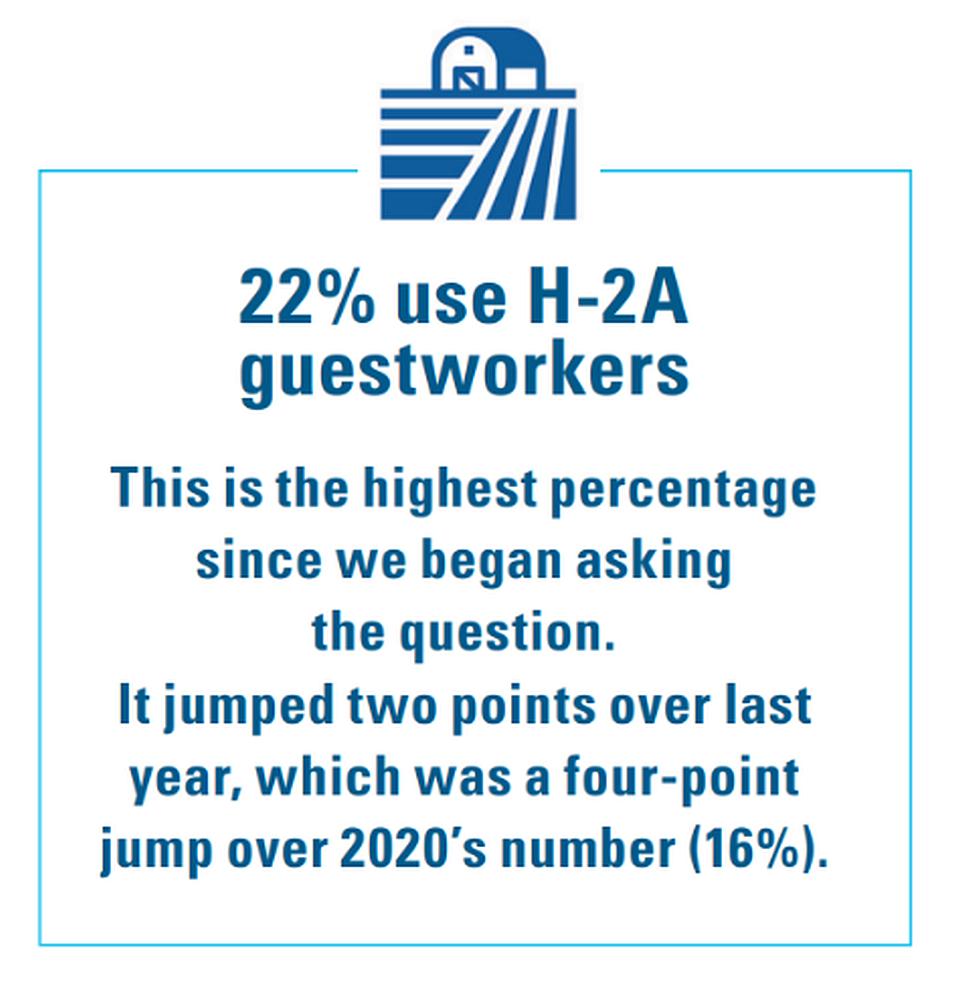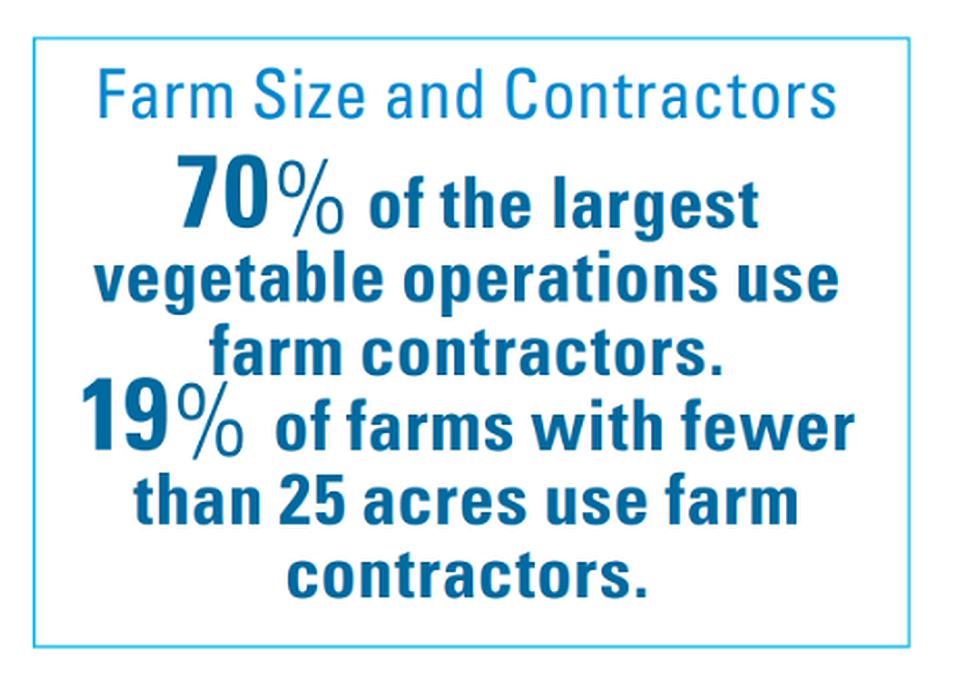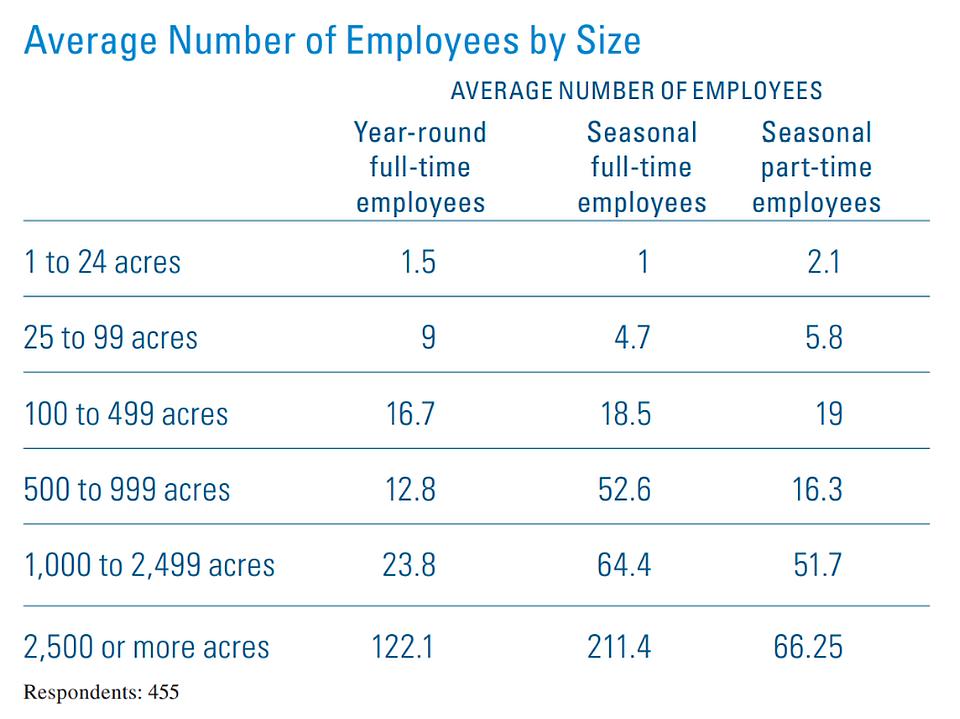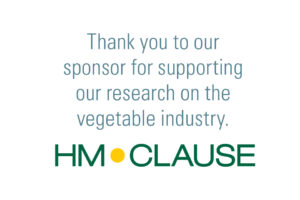What We Know About the Vegetable Sector’s No. 1 Issue
Since labor is the perennial challenge for most growers, we have expanded that section of the American Vegetable Grower State of the Vegetable Industry survey over the past few years. We now ask questions about how many workers you employ, what benefits you offer, and if you use outside workers, either through H-2A or contract labor.
To help us make sense of all the data, we reached out to two leading ag economists to analyze what you told us. Daniel Sumner, a renowned ag economist from University of California (UC), Davis, and his team dug into the numbers, as did Richard Stup, Senior Extension Associate from Cornell University.
Here are some of the more interesting things they found.
How Do You Use Contract Labor?
Of the 29% respondents who use contract labor, growers most commonly wanted contract labor to harvest, Stup found. The top six tasks selected span the entire season, from prepping fields to postharvest.

Other options offered (not listed here) included pruning, trucking, and fertilizing — and fell below 25%.
How Do You Vet Your Contractors?
The most common way vegetable growers vet their contractors is word of mouth, says Hanbin Lee, Post-doctoral Scholar at UC Davis working with Sumner.
Since this is the first year we’ve asked this question, we made it open-ended. We didn’t know how wide- ranging the methods might be and did not want to curtail the options we gave. We had 84 growers respond to this question.
About a fourth of all responders cite word of mouth from peers or referrals, Lee found. Only about a tenth of growers say they have internal criteria, including credit reports, insurance, and other background checks.
A small handful play it safe and use only contractors sourced through their state association or cooperative. Several say they use only those contractors they have long experience with.
And one in six admit they do not vet their contractors.

Is There a Link Between Precision Tools and Contractor Use?
Hiring contractors is costly. Sumner gathered the results for top contract labor tasks and responses to the precision ag tools section of the survey.
When asked what motivated growers to adopt precision ag tools, lack of labor ranked fifth out of 12 options. Production goals of efficiency, crop quality, yields, and conserving water outranked labor. But labor was a stronger motivator than wanting to decrease inputs and boosting food safety recordkeeping, among several other options.
Sumner also flagged the contractor tasks that correspond to automated machinery: Harvesting, weeding, and packing house tasks.
Sumner found the related ag tech usage didn’t rank as high as expected. For example, automated harvesters came in last place among 18 options. Automated weeders and auto sorters/packing machinery (17% each) came in about half way down the list. Guidance systems, water-related technology, variable rate fertilizer tech, sensors of various types, drones, and yield mapping had more grower use than these three tools.

He then took a look at how growers who plan to buy precision ag tools in the future ranked auto harvesters, weeders, and sorters/packers.
Harvesters, which were last place among those actually using precision tools, shot up to tenth place. Sorters/packers sank to second to last place. Auto weeders rose just a couple slots.

Notes: We made two significant edits to this table. First, we threw out the highest and lowest figures for each option to avoid skewing the numbers due to one outlier. Second, these figures do not include family members. We found all farms averaged between two to four family members, no matter the size.
Relationship Between H-2A and Contract Workers
Out of 451 growers responding to questions on using outside workers, 180, or 40%, use H-2A and/or contractors.
Stup analyzed the overlap between responses about using H-2A and contract workers:
- 43, or 24%, use both
- 79, or 44%, use contractors but do not use H-2A
- 47, or 26%, use H-2A but do not use contractors
Stup cautions that since H-2A guestworkers are technically contract workers, the 24% using both may have some unintentional duplication, making that figure lower.
The Economic Experts
Daniel Sumner, Distinguished Professor, University of California, Davis
Richard Stup, Senior Extension Associate, Cornell University
Hanbin Lee, Postdoctoral Scholar, University of California, Davis
Stay tuned for more results from and analysis of the 2023 State of the Vegetable Industry Survey.
Thank You!
HM.CLAUSE generously supports our coverage of the American Vegetable Grower State of the Vegetable Industry survey.











